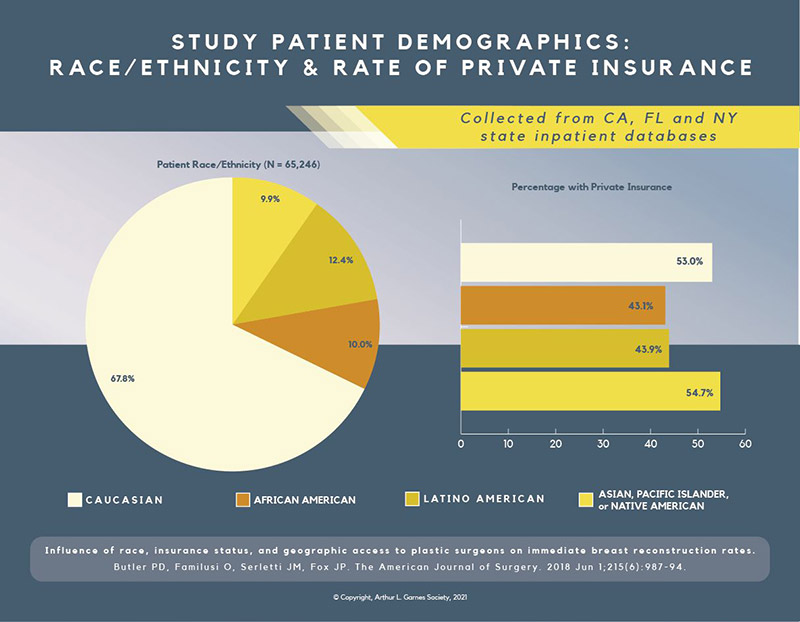Disparities In Breast Reconstruction
Plastic & reconstructive surgery is much more than facelifts and breast augmentation. Some of the most meaningful work we do is to restore the natural form after disfiguring breast cancer surgery.
This important work looks at the rate of immediate breast reconstruction after mastectomy. The final cohort included 65,246 women who were discharged from hospitals in California, Florida and New York between 2008 and 2012.
Read the full manuscript here.




Immediate breast reconstruction is important after mastectomy because it can improve the woman’s psychosocial well-being.
Unfortunately, after controlling for access to a plastic surgeon and insurance type, significant racial and ethnic disparities persist.
It is incumbent on all stakeholders (surgeons, insurance providers, patients) to work to end these inequities. We must educate underserved communities, increase consistent referrals, and work together to increase reconstruction rates of those with public insurance.
Insurance Impacts Breast Reconstruction Rates

Having private insurance and easy access to a plastic surgeon are the greatest predictors of a patient receiving immediate breast reconstruction (IBR). Unfortunately when these two factors are equal, there remains significant racial and ethnic disparities.
This disparity remains, but is not as glaring when comparing patients with public insurance.
“While all racial subgroups had improved IBR rates with increased plastic surgeon density. . . Caucasian women with private insurance realized the largest absolute increase (46%) while African-American and Asian women with public insurance saw the smallest increase (6%).”




